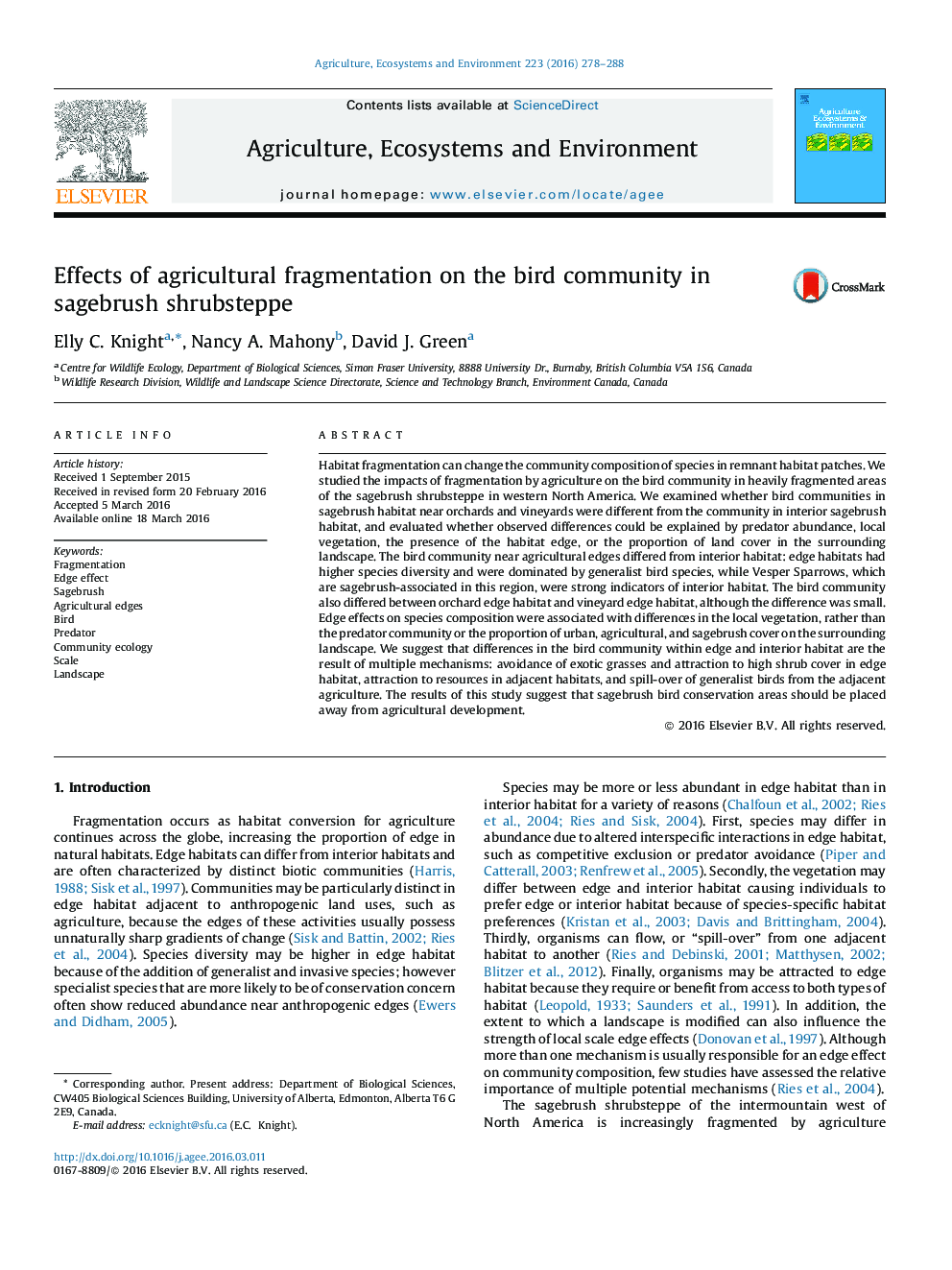| کد مقاله | کد نشریه | سال انتشار | مقاله انگلیسی | نسخه تمام متن |
|---|---|---|---|---|
| 2413506 | 1552029 | 2016 | 11 صفحه PDF | دانلود رایگان |
• Bird communities in sagebrush habitat were different when adjacent to agriculture.
• Edge communities were characterized by generalist species and higher diversity.
• Edge communities differed depending on adjacent crop type (orchard, vineyard).
• Edge effects were due to local vegetation and presence of the edge.
• Bird communities were unrelated to predators and landcover.
Habitat fragmentation can change the community composition of species in remnant habitat patches. We studied the impacts of fragmentation by agriculture on the bird community in heavily fragmented areas of the sagebrush shrubsteppe in western North America. We examined whether bird communities in sagebrush habitat near orchards and vineyards were different from the community in interior sagebrush habitat, and evaluated whether observed differences could be explained by predator abundance, local vegetation, the presence of the habitat edge, or the proportion of land cover in the surrounding landscape. The bird community near agricultural edges differed from interior habitat: edge habitats had higher species diversity and were dominated by generalist bird species, while Vesper Sparrows, which are sagebrush-associated in this region, were strong indicators of interior habitat. The bird community also differed between orchard edge habitat and vineyard edge habitat, although the difference was small. Edge effects on species composition were associated with differences in the local vegetation, rather than the predator community or the proportion of urban, agricultural, and sagebrush cover on the surrounding landscape. We suggest that differences in the bird community within edge and interior habitat are the result of multiple mechanisms: avoidance of exotic grasses and attraction to high shrub cover in edge habitat, attraction to resources in adjacent habitats, and spill-over of generalist birds from the adjacent agriculture. The results of this study suggest that sagebrush bird conservation areas should be placed away from agricultural development.
Journal: Agriculture, Ecosystems & Environment - Volume 223, 1 May 2016, Pages 278–288
